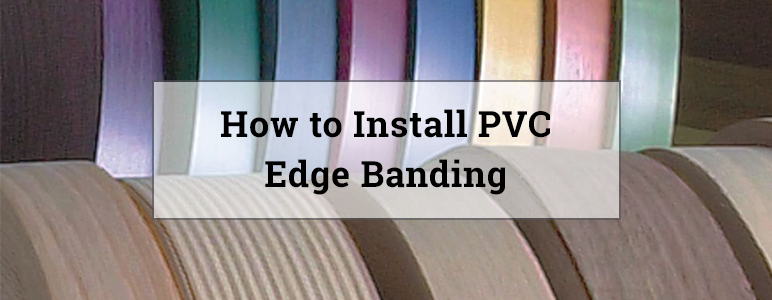No products in the cart.
Uncategorized
How to Install PVC Edge Banding?
PVC is the abbreviation of polyvinyl chloride. It is a type of plastic polymer and is the world’s third-most widely produced synthetic plastic polymer.
There are two forms of PVC – rigid and flexible. It is used in pipes and applications such as doors and windows. But also very commonly used to cover edges in all types of furniture related applications.
What is edge banding?
Edge banding creates a durable and contrasting finish for all the decorative surfaces using a narrow strip of material. That helps in covering the exposed sides of the materials. It gives aesthetically pleasing trim edges and the appearance of reliable or more valuable material.
On similar lines, PVC edge banding is made of vacuum molding, mixing, calendering, and other processes. A few of the types include PVC edge bands, glued edge bands, and 3D edge bands. Most PVC edgebanding is applied automatically with machines, but it is also easy to apply manually with several options.
What is edge banding?
- Step 1: Measure and cut the PVC edge banding as per the requirement.
- Step 2: Apply the contact cement to PVC edge banding and the material with a brush or spray contact cement . Avoid overdoing it. Another option is 2 sided PSA tape which can be stuck to either surface
- Step 3: Let the contact cement dry to touch. Then, bond the material and PVC edge banding. The 2 sided PSA tape is peel off of the roll and applied to either surface.
- Step 4: Remove the excess PVC edgebanding using a utility knife, router or edgebanding trimmer.
- Step 5: You can use the acetone to remove the excess contact cement. Make sure it is not harming the semi-gloss finish. Otherwise, it may put a whitish layer on the PVC, making you replace the whole edge.
Before you start with the process of PVC edge banding, make sure you have left a good amount of room for any alterations to be made later.
Tips while Installing Edge Banding
- Use a masking tape to cover the face of the board and protect it from overspray or excess from brush.
- Avoid using sandpaper to finish installing. It is preferable to use a fine metal file.
- To complete the flushing process, use a nick-less sharp chisel on a laminated or melamine board.
- And use mineral turps to remove any extraneous adhesive. Acetone works also.
There is a slight difference between installing PVC Edge Banding and the rest. Here are a few points that will help you make your decision easier.
- PVC edge banding provides a superior appearance to the edge of furniture or shelving.
- PVC edgebanding also comes with hot melt adhesive in limited colors that will not tolerate direct heat from and iron.
- They are cheaper than any other plastic and more resistant to solvent and UV lights.
- PVCs are durable and scratch resistance. So, it wouldn’t cause you a fortune if it is not handled correctly during its installation.
- It offers a wide range of colors, textures, and finishes. Thus, you can have customized PVC installed.
- PVCs are impermeable and flexible. Hence, they are easy to cut and apply.
- Dirty cut edges, splintering, or tearing are generally elimanted.
- It makes use of a minimum glue line for maximum adhesion since it has a concave back surface.
Check out our store for exclusive veneer collection or to order veneer online. Alternatively, you can also reach us at steve@jsowoodproducts.com or call us at 502-425-2541 for any queries!
